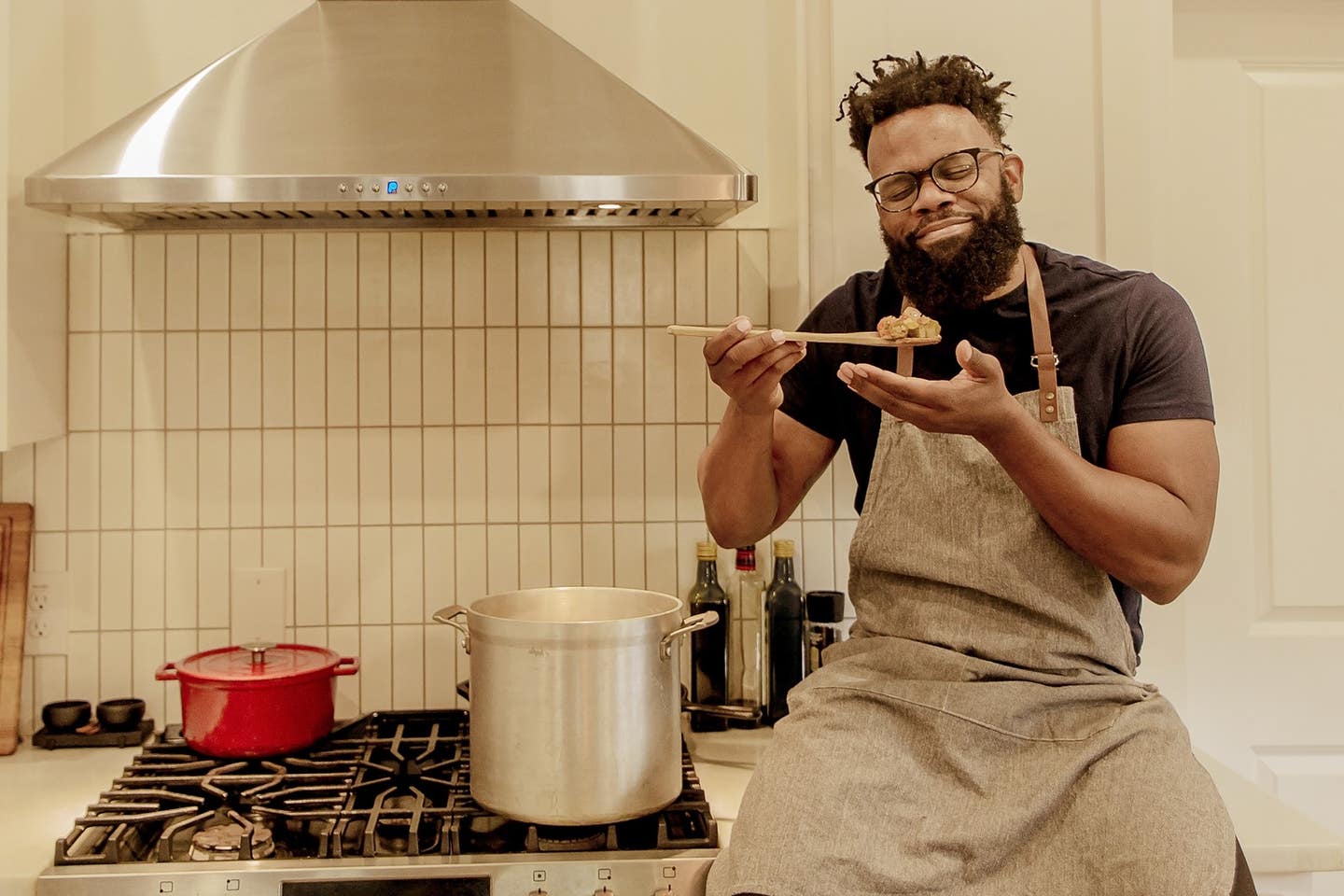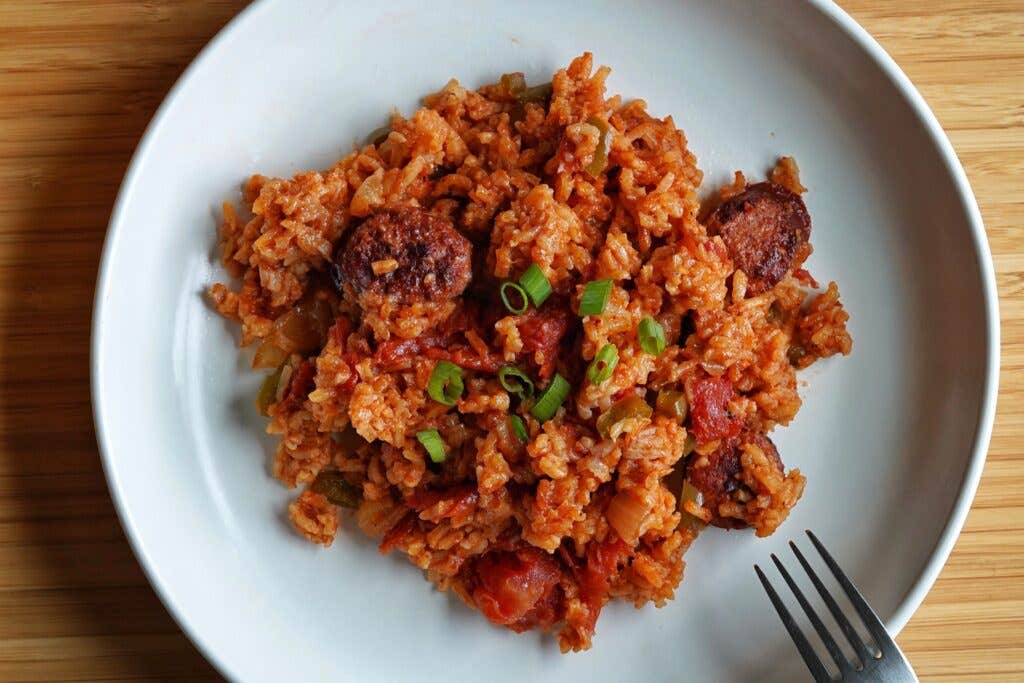
This Gullah Recipe Taught Me About the Culinary Traditions of My Cultural Roots
The key ingredient is the Carolina Gold rice.
I could always tell when my mother was cooking one of her childhood favorite meals for dinner. She seemed to have a little extra love in her wrist as she whipped it up, knowing we would be dining on a dish that she had eaten as a child, just as her own mother had, and her mother’s mother before that. Out of all the hometown meals from her Savannah, Georgia upbringing, red rice in particular held a special place in her heart.
Though my mother grew up in Savannah, she moved to Detroit in the 1960’s with my older sister well before I was born. At the time, my mother had just graduated from Indiana University and accepted a job working in Detroit’s public school system. By the time I came along, she was firmly rooted in the community, cooking up local Midwestern fare. Thus, most of what she cooked when I was a child were recipes she collected from friends and co-workers in Detroit—corned beef and cabbage, local fish like perch and smelt, and other dishes indicative of the region. Occasionally, however, we were treated to one of the Savannah specialties she grew up eating.
I’ll admit I was a picky eater as a youngster, and not all of my mother’s Savannah specialties were on my must-eat list. Back then, some of the crab dishes were too fishy-tasting for my liking, and I thought even her famous six-egg mac-and-cheese couldn’t beat the boxed variety. But I loved her red rice. The dish hails from South Carolina, just across the river from Savannah. My mother would begin by frying up several pieces of bacon, which added a smokiness and depth of flavor to the rice. The grains were then cooked directly in the tomato mixture, allowing them to absorb all of the aromas and resulting in a perfectly balanced, smoky-sweet flavor profile. It always put a smile on my face and a warmth in my belly, and I think it took a special skill to prepare the rice in a way that was bursting with flavor while also retaining the perfect texture and consistency—not too dry, not too soupy. Mom always made a large batch, knowing all the relatives gathered for the family get-together would want second helpings. Everyone eagerly anticipated that iconic white Corningware baking dish—the one with little blue flowers on the side—making its way to the table; we’d look on hungrily as my mother removed the glass lid to reveal a mound of fluffy, aromatic, piping-hot red rice.
After living my entire life in Detroit, it wasn’t until I left Michigan and moved to Houston for college that I was immersed in the cuisine and culture of a different region. Once I arrived in Texas, I regularly ate the Creole food of the Gulf Coast and quickly became enamored with the cuisine. I savored dishes like gumbo, deeply flavorful from meticulous simmering, and fell in love with crawfish boils, which are as much about the sense of community they create as about what’s in the pot. Sitting around the kitchens of my Houston friends and their families, I began picking up techniques and recipes of traditional Creole cuisine. When I graduated from college (and finally had disposable income that allowed for more than beer and potatoes), I started experimenting in my own kitchen, drawing on those lessons I’d collected. I realized then that these dishes I had grown to love actually stemmed from the same culinary traditions as the red rice my mother made. Living, eating, and cooking in Texas allowed me to rediscover the food of my heritage.
As much as writing Fix Me A Plate was about perfecting the recipes and creating visual storytelling through photography, it was equally an opportunity for me to explore some of the culinary traditions that have been passed down through generations in my family. In my research, I learned that there has been a recent push to revive or save some of the heirloom grains traditionally used in these recipes. At the forefront of this push is South Carolina—which is where Gullah red rice comes from and which was once the epicenter of rice production in the United States—with its production of the highly coveted Carolina Gold rice.
Carolina Gold is prized not only for its nutty, almost hazelnut-like taste, but also for its firm texture. This texture allows the rice to withstand boiling better than other varieties, ensuring that the grains don’t turn out gummy or stuck together. Rice became king crop in South Carolina because of the state’s optimal growing conditions: wet, swampy, soft earth. In an effort to control the quality and availability of Carolina Gold rice, the Carolina Gold Rice Foundation was formed in 2004. I realized that in order to truly honor the authentic roots of South Carolina’s rice dishes, they must be made with Carolina Gold Rice. After searching high and low at several specialty stores in Texas, I wound up having to ship it from Anson Mills, a grower in South Carolina that specializes in organic heirloom grains.
In tracing the journey of what it takes to produce a plate of red rice, I was reminded of my many trips to the low country as a child. Whether it was a family reunion on Daufuskie Island in South Carolina (which was recently featured in the Netflix documentary High On The Hog), or crabbing with my uncles in preparation for a crab boil big enough to feed the entire extended family, some of my fondest childhood memories come from time spent on these lands.
In truth, the historical origins of red rice actually go back even further. It all stems from Jollof rice, a dish that originated in West Africa. When colonists in the coastal region of South Carolina and Georgia discovered that the surrounding wetlands were ideal for growing rice, they purchased slaves from Sengegal, Sierra Leone, and Liberia, collectively also known as the the “Rice Coast” of Africa. These slaves brought not only their rice-growing expertise but also their rice-centered meals. Red rice was born out of this traditional West African rice dish.
Over the course of many decades, generations of families have added their tweaks and substitutions. My mom’s mouth watering rendition was influenced by her upbringing and experiences, just as my dish has been influenced by my own. And while my mother never had the opportunity to sample my perfected rendition, it brings me joy to know that scores of people around the world will get to taste some of her fluffy red rice from her big white baking dish.
Recipes

When Scott was growing up, Gullah red rice was a fixture on his family’s dinner table. Get the recipe >
Keep Reading
Continue to Next Story










